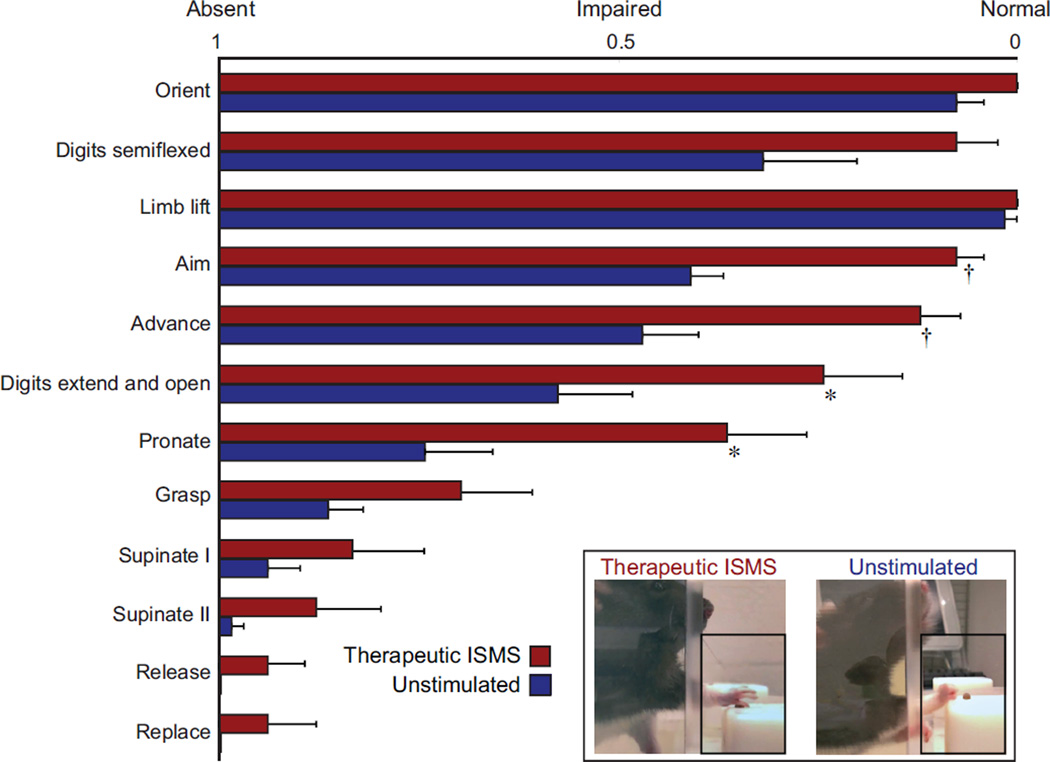Figure 6.
Detailed analysis of forelimb reaching demonstrates marked improvement after 12 weeks of therapeutic ISMS treatment. The forelimb reaching task was segmented into 12 components, presented in order of occurrence from top to bottom. In all 12 components, stimulated rats performed better than unstimulated animals, and these differences were significant between treatment groups in 4 of the 12 measures (* rank sum p < 0.05; † p < 0.004 after Bonferroni correction; mean + SEM). Inset: Images of a stimulated (left) and unstimulated (right) animal performing the precision forelimb reaching task. Note that the stimulated animal has reduced flexor tone of the forelimb, manifested as improved ability to extend the arm and open the digits. These changes are evident in the group scores for animals receiving therapeutic stimulation (main figure).

